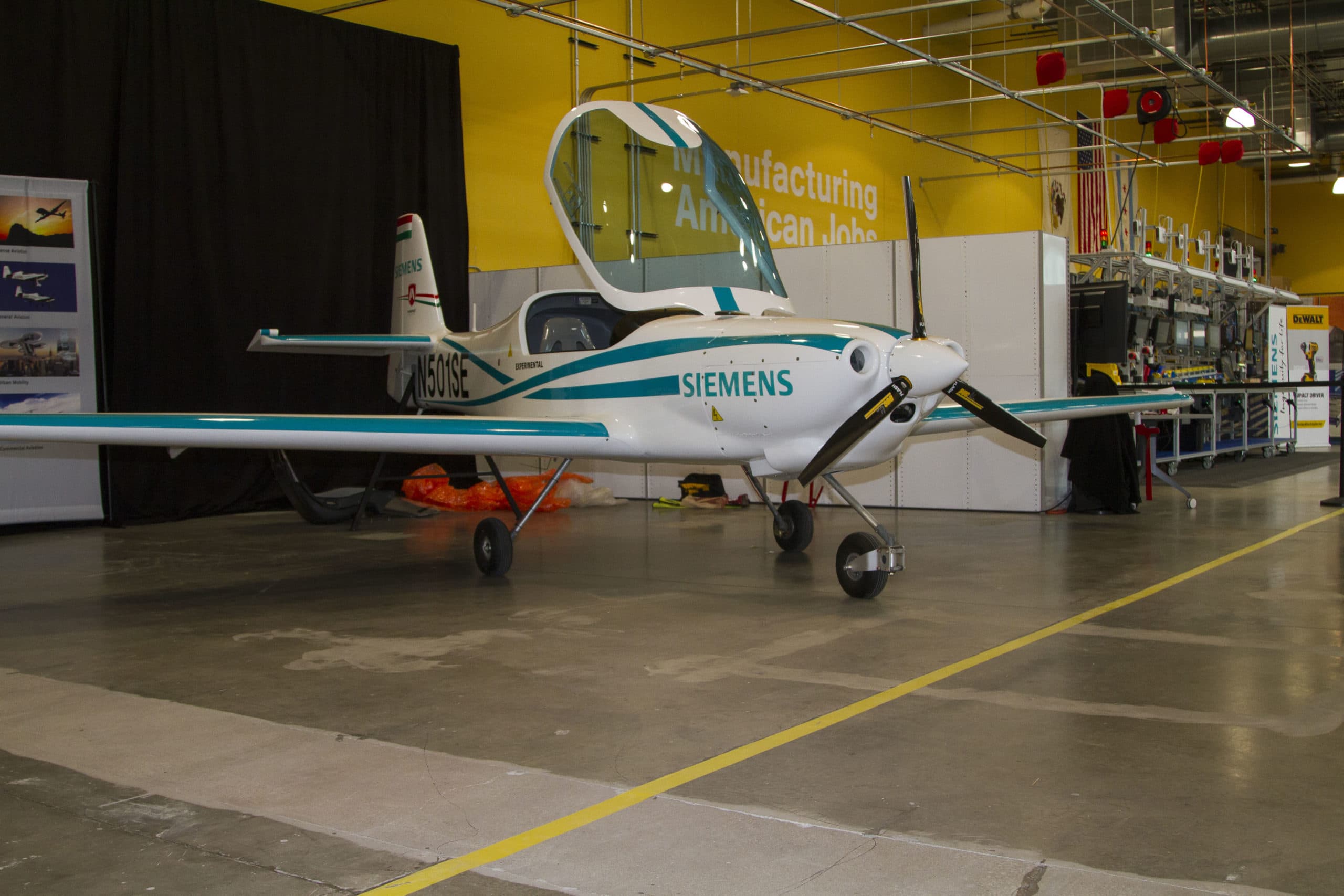eAircraft: Siemens Unveils Electric Propulsion Technology for First Time in US
Share

APEX Insight: Digital twins, electric propulsion and the future of mobility were at the top of the agenda at Siemens’ annual Innovation Day. APEX Media was on-site in Chicago to see how the European electrical solutions giant plans to bring its expertise in ground and sea transport to the aerospace sector.
Siemens unveiled a prototype of its electric propulsion technology for the first time in the US yesterday, at its Innovation Day held at the Digital Manufacturing and Design Innovation Institute in Chicago. Teri Hamlin, VP eAircraft USA, Siemens, discussed projections for the market, which include scheduled hybrid-electric commercial flights by 2030 and electric propulsion becoming the standard for all aircraft types by 2050, adding that these milestones may be reached even sooner. “Things are moving faster than we thought they would,” she said, “faster than the projections we made just a few years ago.”
The advantages of eAircraft technology are threefold: reductions in fuel consumption, carbon emissions and noise – the last of which has the potential to truly impact the passenger experience. “We can have quieter airports, quieter takeoff and landing spots and perhaps even airports that operate all night long,” said Hamlin, herself a former commercial and military pilot, boasting an over-20-year career in aviation.
“We can have quieter airports … and perhaps even airports that operate all night long.” – Teri Hamlin, Siemens
And we aren’t just talking about international hubs: “The whole landscape is shifting. When you are able to hybridize something like a regional jet you are opening up the usage of those regional airports a lot more, with a lot more flights, a lot more capacity and people using them a lot more.” Use of regional airports could mean shorter wait times at security for commuters and less stress navigating massive terminal complexes. Siemens is already in talks with several small airlines specializing in short-haul, intracity routes, Hamlin says, and the many moving parts are already converging for regional jet routes to begin proliferating under hybrid architectures.
Speaking about Siemens’ recent E-Fan X partnership with Airbus and Rolls-Royce to develop hybrid-electric propulsion for commercial aircraft – demonstrated using virtual reality at yesterday’s event – Hamlin says the partners are each bringing to bare what they are best at. “Siemens isn’t planning to be an aircraft OEM,” she said. “We are focused on doing what we are best at and that’s electrical propulsion units. This is where Siemens shines.” While the E-Fan X demonstrator is anticipated to fly in 2020, CityAirbus, a multi-passenger, self-piloted electric vertical take-off and landing (VTOL) vehicle designed for urban air mobility and powered by Siemens’ electrical propulsion units, is expected to fly by the end of this year.
Siemens’ electric propulsion systems are designed using what the company calls a “digital twin,” a virtual representation that allows the company to tweak and optimize the design throughout the entire lifecycle until the system takes flight. “No one in the industry can develop a product like we are doing and have the digital software there,” said Barry Chapman, VP Aerospace and Defense, Federal and Marine Industries. “We are going to be able to make changes a lot faster. We are going to be able to take in regulatory requirements a lot faster. And we are going to be able to do a lot more in a lot less time with a higher rate of fidelity because we have the platform.”


